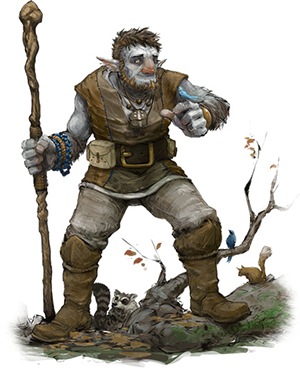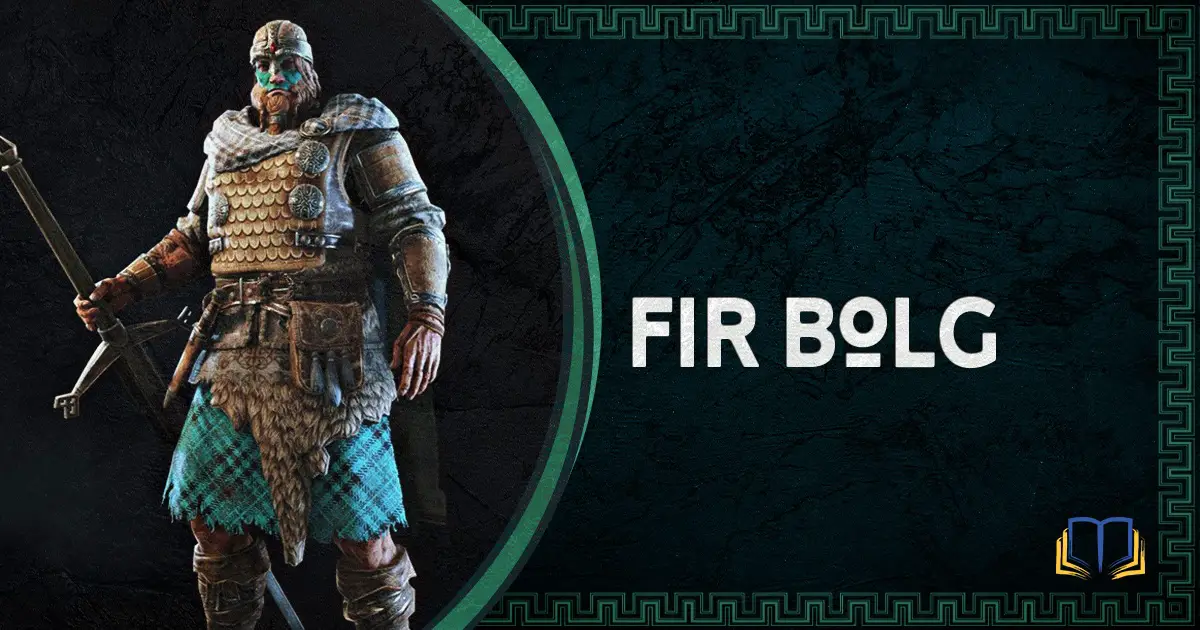Migrations appeared throughout history and will continue to do so for a long time. Many countries and regions around the world, were destinations for a various number of migrations.
One of the most peculiar group of migrations is embedded into the Irish mythology. But these are no ordinary people.
In the many groups headed for Ireland, many are said to be gods.
One such group are the Fir Bolg (also called Firbolg or Fir Bholg). But were they gods, demons, deities, or were they just and ordinary group of people? Let us find out.
- Who were the Fir Bolg?
- Where do the Fir Bolg come from?
- How did the Fir Bolg get their name?
- The Fir Bolg Return to Ireland
- The Fir Bolg divide Ireland
- Ireland under the Fir Bolg
- Cath Mag Tuired (The battle of the Plain of Towers)
- The Fir Bolg after Cath Mag Tuired
- Cath Tánaiste Maige Tuired (The second battle of Magh Tuired)
- The Similarity Between the Israelites and the Fir Bolg
- Were the Fir Bolg real?
- The Connection Between the Fir Bolg and the Belgae
- Fir Bolg in Pop Culture
- Conclusion
- Bibliography and Further Reading
Also, don’t forget to visit our Celtic Mythology hub, where we have a LOT more articles like this one.
Who were the Fir Bolg?
The Fir Bolg are considered to be mythical early invaders of Ireland. We receive this information from the Mythological Cycle in the Book of Invasions or Lebor Gabála Érenn in Irish. According to this book, they come many generations after the Nemadians and around thirty-seven years before the Tuatha De Danann.
Where do the Fir Bolg come from?
The forefather of the Fir Bolg, named Starn, migrated to Greece when the Memedians were driven out of Ireland by the Fomorians or Fomhóraigh. They remained in Greece for 230 years. While in Greece, they grew in numbers.
Consequently, this worried the Greeks who feared for their safety. The Greeks found a solution by making the Fir Bolg carry around bags packed with soil and heavy stone in order to make the Greek land more fertile.
How did the Fir Bolg get their name?
Due to the fact that the Fir Bolg constantly carried around the bags that were filled with soil and stone, they got the name ‘Bag Men, or Men of the Bags’. This name, translated into Irish, means Fir Bolg.
The Fir Bolg Return to Ireland
But how did the Fir Bolg return to Ireland?
Understandably, being aware of the fact that they need to seek out a better future for themselves, the Fir Bolg devised a plan to escape Greece. The plan was devised by five brothers – Sláine mac Dela (meaning the first High King of Ireland), Gann, Genann, Sengann and Rudraige.
The Fir Bolg constructed a boat out of the leather bags that they were carrying, and escaped Greece once and for all.
The Fir Bolg divide Ireland
The Fir Bolg arrived in Ireland in three groups or divisions. The Gaileoin which were 1,000 strong, Firbolg, which consisted of 2,000 men and Fir Domnann which boasted around 2,000 people.
Upon the arrival of the Fir Bolg in Ireland, the five sons of Dela divided the island. Gann and Sengann took two parts of Munster, Genann took Connacht, Sláine took Leinster, Rudraige took Ulster where he found a dynasty.
Ireland under the Fir Bolg
Once the Fir Bolg were firmly established in Ireland, they became to make it their own.
The lay of the land
When the Fir Bolg arrived, Ireland was already suitable for agriculture. They did not have to clear any plains. Everything was already set up for them to start cultivating the land.
The high kingship of Fir Bolg
Once they took over the land and secured their rule, the Fir Bolg divided Ireland as mentioned before. A High Kingship was established and a succession of nine High Kings ruled over Ireland for the next thirty-seven years.
The seat of the High King was established in Tara, which is associated with royal and religious power. Supposedly, the Fir Bolg included the sub-groups of Fir Domnann and Fir Gailioin.
War inventions of the Fir Bolg
The Fir Bolg were already adept at war. It is said that an early king named Rinnal was the first to use weapons with points. Although they were skilled warriors, they did not engage into any conflicts.
Some see this as a proof that the Fir Bolg and the Fomorians were identical. But this claim is unsupportable.
The generous king of the Fir Bolg
Despite the fact that the Fir Bolg held Ireland for only thirty-seven years, they were remembered by their generous king. Eochaid mac Eirc was the king who established justice and provided that all rain will fall as dew. Every year yielded a great harvest. His wife Tailtiu had a festival established in her honor.
Cath Mag Tuired (The battle of the Plain of Towers)
The end of the rule of the Fir Bolg came with the arrival of the Tuatha De Danann. The Tuatha De Danann were supernatural beings, and their name translates into ‘Peoples of the Goddess Danu’. Their king, Nuada, asked to be given half of the island, but the Fir Bolg under their king Eochaid refused.
What ensued was the battle of the Plain of Towers. During the battle, the champion of the Fir Bolg named Sreng, challenged Nuada to a single combat. Sreng managed to cut off Nuada’s right hand.
It did not matter too much because the Fir Bolg were defeated when their king was slain by the Morrigan.
The Fir Bolg after Cath Mag Tuired
After the battle, there are two variations about the fate of the Fir Bolg. According to one version, they were given one quarter of Ireland as their own and they chose Connacht.
According to the second version, after the defeat at the battle of the Plain of Towers, the Fir Bolg fled Ireland and landed in Ara, Ile, Rachra and other islands.
Cairbre Nia Fer
After the Cruithne drove them out of their newly inhabited lands, they went to Cairbre Nia Fer (the King of Laighin or Leinster). The king gave them lands but imposed a heavy tribute upon them.
Ailill and Medb
Knowing that they could not live in such conditions, they fled again. This time under the protection of Ailill and Medb the king and queen of Connacht. Upon their arrival, they received some lands by the king and queen. They lived in fortresses and in islands of the sea around Ireland until Cu Chulainn quenched them.
Cath Tánaiste Maige Tuired (The second battle of Magh Tuired)
In the great tale about the Second Battle of Magh Tuired, the Fir Bolg can be seen on the side of one of the warring factions. The Fomhoraigh demons and the Tuatha De Denann gods decided to clash their forces at the second battle of Magh Tuired. In this battle, the Fir Bolg can be seen on the side of the demons who eventually lose the battle.
After this, there are very little mentions of the Fir Bolg.
The Similarity Between the Israelites and the Fir Bolg
Since the main note of this story is the epic origin story of the Irish, the Lebor Gabala can be understood as an effort to come up with and origin myth that is similar to the Christian ones.
The Fir Bolg are similar to the Israelites in the sense that they are escaping from slavery and making their journey to the Promised Land.
Were the Fir Bolg real?
There is no doubt that the Fir Bolg were actual historical people.
The Fir Domnann left their name on various places such as Inbhear Domnainn in the County of Dublin and Iorrus Domnainn in the County of Mayo.
Specific Irish tribes, clans and extended families were identified in the historic era as Fir Bolg and denied the privileges under the Brehon Law. This was because they were enemies of the Gaeil.
The Connection Between the Fir Bolg and the Belgae
There are certain theories that link the Fir Bolg to the Belgae. The theories suggest that the Fir Bolg are a branch of the Belgae.
In the representation of the tribes of Ireland in the works of Ptolemy of Alexandria, we can find the name Manapii. According to some researchers, The Manapii are a branch of the Menapii which are a tribe of the Belgae of northern Gaul. In Irish seanchas (which include law, history and genealogy) the Manappi or Manaig are classified as a branch of the Fir Bolg, just as the Menapii were a branch of the Belgae on the Continent.
Fir Bolg in Pop Culture

Another mythical race named after the aforementioned Celtic descendants occurs in the game Dungeons & Dragons and are called Firbolg. These Firbolgs, on the other hand, do not resemble that Celtic race.
They are characterized as a solitary species of giant-kin that prefer not to interact with other sentient beings. In the game, they are the most strong and clever of the giant-kin.
Firbolgs are reclusive in the game, preferring to stay with their tribes in the forest, yet they are formidable when it comes to magic and some weaponry.
Conclusion
The myth about the Fir Bolg is shrouded in mystery and questions because it has been exposed to the unforgivable winds of time.
What may have begun as a completely accurate historical testament about the origin of certain people and their road to Ireland, was vailed by the mythical and supernatural. I believe that we need to dig deeper into these myths in order to reveal the true message that is intertwined and overshadowed by the supernatural.
We need to move forward knowing that behind every myth and every legend there is an event which planted the seed for the story that we know today.
Bibliography and Further Reading
- James MacKillop – A Dictionary of Celtic Mythology
- Proinsias Mac Cana – Celtic mythology (Library of the world’s myths and legends)
- Philip Freeman – Celtic Mythology: Tales of Gods, Goddesses, and Heroes
- Margaret Alice Murray – The God of the Witches


